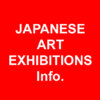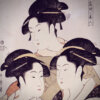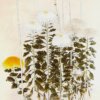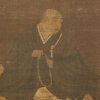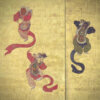Karaemekiki: A Special Profession that Formed a School of Painting in Nagasaki during the Edo Period.
Karaemekiki was a job title in the Nagasaki Magistrate’s Office established in the mid-Edo period. The main duties were to authenticate and appraise the value of calligraphic works, paintings, and pottery shipped from the Qing Dynasty, as well as to make drawings of traded goods, birds, and animals.
General information
The Karaemekiki job was born out of the unique environment of Nagasaki, the only port city in Japan to have been allowed to trade with the Netherlands and China despite being under a national isolation system. This was a position that existed only in the Nagasaki Magistrate’s Office and not in any other magistrate’s office.
The first Karaemekiki was appointed in 1673. The second was appointed in 1688. The name of each is not known, but, likely, the one appointed in the Genroku period (1688-1704) was Ohara Keizan.
Watanabe Shūseki, the famous founder of the Karaemekiki school, was appointed to this position in 1697. Shūseki was a high disciple of the immigrant monk Itsunen Shōyū (Chinese: 逸然性融, 1601 in Hangzhou, Zhejiang, China – 1668 in Nagasaki, Japan), and it is clear that the style of the northern school of Chinese painting was officially recognised.
After Shūseki, Hirowatari Ikko, Ishizaki Gentoku, and Araki Genyū were appointed. From then on, the position of Karaemekiki was inherited by four families: the Watanabe, Ishizaki, Hirowatari, and Araki families, and continued until the end of the Edo period.
The purpose of the job demanded realism, and it developed while absorbing Western-style painting and realistic painting methods such as the *Ōbaku school and *chinsō. They formed a school called the Karaemekiki School and produced many painters. In the latter half of the Edo period, Western-style painters such as Ishizaki Yūshi and Araki Jogen appeared, and they also had a close relationship with Kawahara Keiga, a town painter.
- *Ōbaku school is a school of painting influenced by the art of Ōbaku, which was brought to Japan by the monks of the Ōbaku sect. It is characterized especially by chinsō.
- *Chinsō (Japanese: 頂相 [tɕiɰ̃soː]; alternatively pronounced Chinzō [tɕindzoː]) are commemorative portraits of Zen masters, a traditional form of East Asian art, specifically Zen art.

